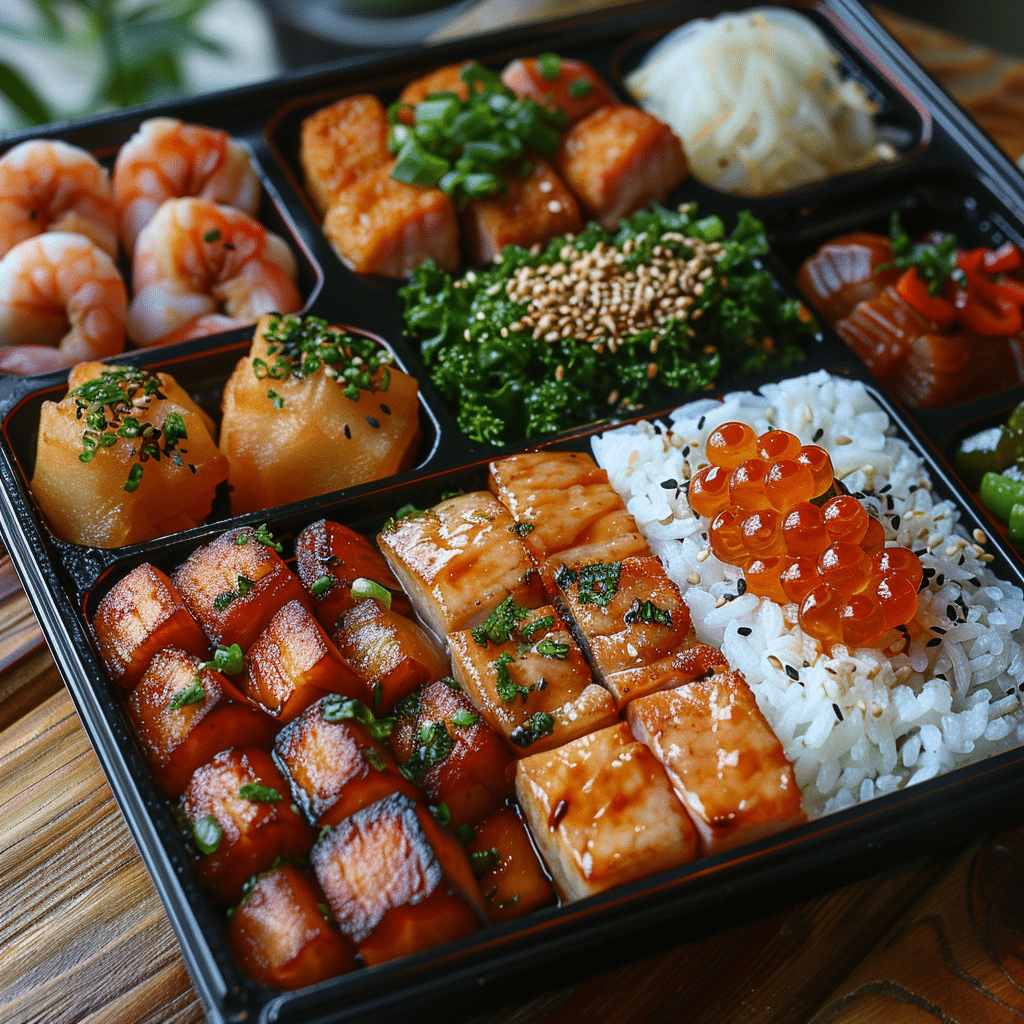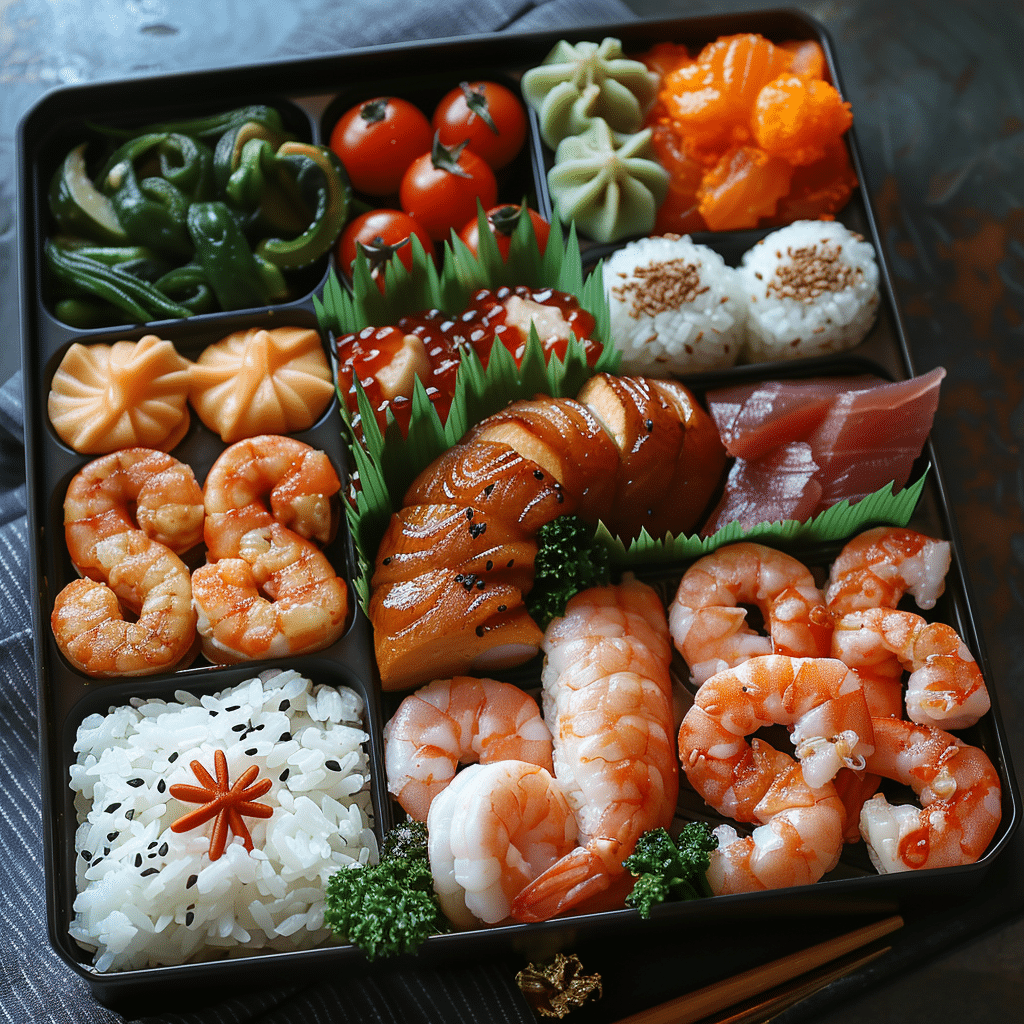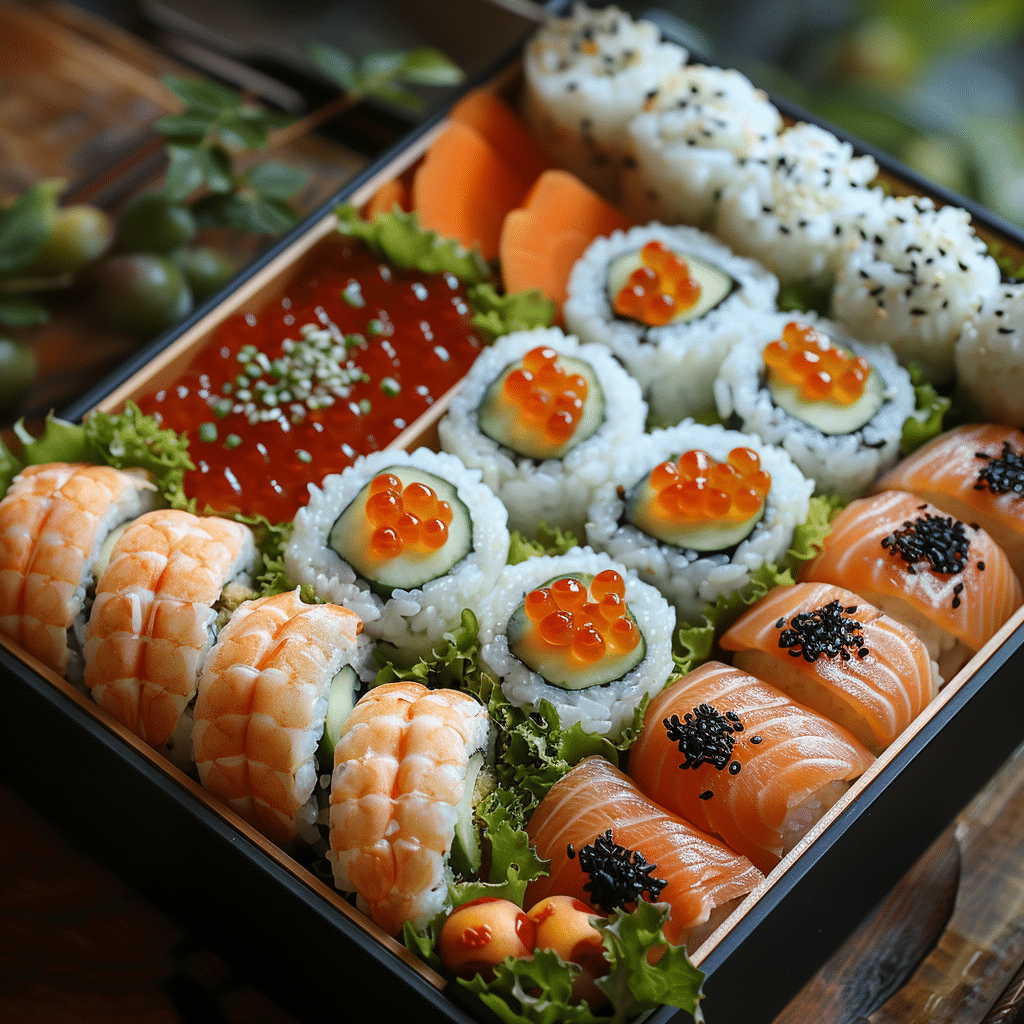Published Date: January 2nd, 2024 by CWM News
In Japan, the bento box is much more than just a packed lunch; it’s a culinary art form that combines aesthetics, nutrition, and convenience. As more people worldwide seek healthy and balanced meal options, the popularity of Japanese bento boxes continues to rise. Let’s delve into some of the best choices available today.
Top 7 Japanese Bento Boxes for 2024
The following list highlights some of the finest bento boxes currently available, ideal for those who prioritize fresh, balanced meals on the go:
1. Zojirushi Classic Bento Lunch Jar
Zojirushi is a well-known brand that delivers high-quality kitchen products, and their Classic Bento Lunch Jar is no exception. This vacuum-insulated jar keeps food hot or cold for hours, featuring multiple containers to separate different meal components. The sleek stainless steel design and carrying bag make it perfect for anyone on the move.
2. Monbento Original Bento Box
Monbento, a French brand inspired by Japanese tradition, offers the Original Bento Box crafted from high-quality BPA-free plastic. Its modular design includes leak-proof containers and a range of colors and patterns, appealing to both adults and children. The dual-level structure allows for portion control, ensuring meals remain fresh and nutritious.
3. Takenaka Bento Box
Takenaka Bento Boxes are lauded for their innovative design and quality craftsmanship. Made in Japan, these boxes come in various vibrant colors and stackable layers, making them both functional and aesthetically pleasing. Their microwave-safe and dishwasher-safe features add to their practicality.
4. Bentgo Kids Children’s Lunch Box
For parents seeking a durable and fun option for their children’s lunches, the Bentgo Kids lunch box is ideal. It features five compartments to keep food items separate and is built from sturdy, BPA-free materials. The built-in portion sizes guide healthier eating habits for young ones.
5. Hakoya Moment Bento Box
Hakoya’s Moment Bento Box embraces traditional Japanese craftsmanship with a modern twist. These boxes often showcase hand-painted designs or intricate patterns, making each piece unique. Their compact yet spacious design is perfect for portion control and maintaining a balanced diet.
6. EcoLifeMate Bamboo Bento Box
Sustainability-conscious consumers will appreciate the EcoLifeMate Bamboo Bento Box. Made from biodegradable bamboo fiber, this eco-friendly option combines style with environmental responsibility. The box typically includes a natural bamboo lid and an adjustable separator to organize meals effectively.
7. Jijiyu Life Stainless Steel Bento Box
For a more durable and long-lasting option, consider the Jijiyu Life Stainless Steel Bento Box. This sturdy metal box is rust-resistant and easy to clean. It comes with secure clasps and a silicone sealing ring to prevent leaks, making it a reliable choice for packing both liquid and solid foods.

The Art and Tradition Behind Japanese Bento Boxes
Japanese bento boxes are steeped in history, dating back to the Kamakura period (1185-1333). Initially used by farmers and workers for practical purposes, bento boxes have evolved into an integral part of Japanese culture, reflecting care and balance in meal preparation. The presentation aligns with the Japanese principle of “ichi-ju san-sai,” which translates to one soup and three dishes, emphasizing variety and nutrition.
The bento historically stars rice or noodles as the foundational starch, accompanied by a protein or two like fish, eggs, or meat. These two main focal points are accented with a variety of pickled and cooked vegetables, and a few bites of fruit, creating an easily balanced meal for healthy eating away from home. While modern takes on the bento are many, the essence remains tied to this harmonious mix of flavor and nutrition.
| Component | Details |
| Main Starch | Typically rice or noodles. Rice is often complemented with sesame seeds, seaweed, or pickled plums. |
| Protein | Commonly includes fish (like salmon), eggs (in forms like tamagoyaki), or meat (such as teriyaki chicken). |
| Vegetables | A mix of cooked or pickled vegetables such as carrots, broccoli, radish, and edamame. |
| Fruits | Generally small portions like apple slices, grapes, or berries to add a sweet balance. |
| Design & Craftsmanship | Material: Basic options use plastic; high-end bento boxes may use lacquered wood or stainless steel. Design: Can range from simple and functional to elaborate and artistic. |
| Cost | Affordable Options: $5 – $20.—Plastic, basic design. Premium Options: $30 – $100.—Lacquered wood, stainless steel, intricate designs. |
| Health Benefits | Balanced portions help control serving sizes, encouraging a diverse range of food and nutrients. |
| Customization | High versatility; can be personalized for dietary preferences and aesthetic designs. |
| Convenience | Ideal for on-the-go meals; perfect for work, school, or travel. |
| Category | Examples |
| Starch Options | White rice, brown rice, soba noodles |
| Protein Options | Grilled fish, tamagoyaki (Japanese rolled omelette), teriyaki chicken |
| Vegetable Options | Pickled radish, sautéed spinach, carrot sticks |
| Fruit Options | Apple slices, strawberries, kiwi slices |
| Feature | Benefit |
| Portion Control | Helps manage intake and balance nutrients effectively. |
| Versatility | Can be tailored to dietary restrictions or preferences. |
| Aesthetic Appeal | Encourages creativity and enjoyment of meals through visually pleasing presentations. |
| Durability | High-quality materials increase the lifespan of the bento box. |
Health Benefits of Bento Box Meals
Packing meals in a bento box promotes portion control and encourages a balanced diet consisting of various food groups. This practice helps in maintaining physical health while avoiding the monotony of repetitive meals. The compartments typically include:
– Proteins: Fish, tofu, or lean meats
– Grains: Rice, quinoa, or noodles
– Vegetables: Fresh or pickled vegetables for flavor and vitamins
– Fruits: Seasonal fruits for natural sweetness and fiber
By preparing these components at home, one can guarantee the freshness and quality of the ingredients, avoiding unhealthy additives found in many pre-packaged meals. This approach nudges one towards healthier eating habits and an overall balanced diet.

Tips for Creating Your Own Bento Box Meals
Creating a bento box that is both visually appealing and nutritionally balanced can be an enjoyable endeavor. Here are some tips to get started:
– Plan Ahead: Prepare meal components in bulk and store them in the refrigerator to make morning assembly quick and easy.
– Balance Flavors and Textures: Combine savory, sweet, crunchy, and soft items to provide variety in each bite.
– Use Seasonal Produce: Incorporate fruits and vegetables that are in season for the best taste and nutritional value.
– Maintain Portion Control: Utilize the compartmentalized nature of the bento box to avoid overfilling and ensure balanced portions.
– Incorporate Japanese Elements: Include traditional items like onigiri, tamagoyaki, or edamame to recreate an authentic Japanese experience.
Adopting these tips can elevate your lunch routine, making each meal an opportunity to enjoy a balanced, appetizing, and healthy dining experience.
Embracing the Bento Box Lifestyle
Adopting the bento box approach to meals can lead to healthier eating habits, minimize food waste, and elevate the daily lunch routine into a delightful and nourishing experience. Whether you’re utilizing a Zojirushi Classic, a Monbento Original, or any of the other excellent options, the key is to find a bento box that fits your needs and inspires you to enjoy freshly prepared, balanced meals every day.
Exploring the sophistication and practicality of Japanese bento boxes provides a glimpse into a lifestyle that values health, creativity, and tradition. So why wait? Dive into the world of bento and discover the joy of fresh, balanced meals, beautifully contained and ready to go!
For more engaging reads similar to this, visit our other articles, such as Prince Harry young or check out the trending Hello Kitty And My Melody. We at CWM News guide you through intriguing topics with a fresh perspective.
Best Japanese Bento Boxes for Fresh, Balanced Meals
Fascinating History of Japanese Bento Boxes
Ever wondered how Japanese bento boxes came about? Dating back to the 12th century, bentos were originally simple packed lunches for workers in the fields and samurai during lengthy battles. Today, they’ve become a cultural staple across Japan, known for being visually appealing and nutritionally balanced. Compared to typical lunchware, Japanese bento boxes emphasize variety and portion control, making every meal feel like a see thru top( experience, revealing layers of culinary delight.
Bento Box Artistry
Modern bento boxes have transformed into an art form, commonly referred to as “kyaraben” or character bento. Creators design meals to resemble popular characters from anime, video games, and more, turning lunchtime into a visual treat. Though it may appear meticulous, this practice is another way bentos bring joy to everyday life—much like how a good mansplaining meme( can brighten up a mundane afternoon.
Bento Boxes and Cultural Impact
Interestingly, different regions in Japan have their own unique styles of bento boxes. In the Kansai area, rice forms the bulk of the meal, while the Kanto area often features more varied ingredients. Travelers often collect these local specialties, making them a bit like foodie souvenirs. Hence, if you’re considering a culinary journey, don’t forget to renew passport online( before diving into Japan’s regional bento traditions.
Global Influence of Bento Boxes
Moreover, Japanese bento boxes have gained a global following. In many countries, people appreciate the balance and creativity that goes into each meal. Whether you’re preparing a balanced lunch for kids or an Instagram-worthy meal for yourself, bento boxes offer a levi 501 jeans( level of timeless appeal and functionality. Their influence is so pervasive now that you can even find themed bento boxes for venues as unique as weather Disney World,( merging two beloved worlds seamlessly.
The Future of Bento Boxes
As the popularity of bento boxes continues to surge, newer and more creative versions are constantly emerging. From eco-friendly materials to technology-infused compartments that keep food fresh, the sky’s the limit. Much like traditional maisons chinoises( that showcase a blend of history and modernity, Japanese bento boxes are evolving while staying true to their roots.
So next time you pack lunch, consider the rich history and thoughtful creativity that a Japanese bento box brings. Your meal won’t just be food—it’s a slice of culture and a bit of artistry, all packed into one.

What’s in a traditional Japanese bento box?
In a traditional Japanese bento box, you’ll find a nice mix of rice or noodles as the base, coupled with some type of protein like fish, eggs, or meat. It’s also packed with cooked and pickled veggies, and sometimes a bit of fruit to balance things out.
What would a Japanese person put in a bento box?
A Japanese person would usually fill their bento box with rice or noodles, a protein like grilled fish, chicken, or tamagoyaki (a type of omelet), and a variety of vegetables that might be steamed, sautéed, or pickled. Sometimes, they’ll even include a piece of fruit or a small dessert.
Why are bento boxes so expensive?
Bento boxes can be pricey because of the materials and craftsmanship involved. High-quality ones are often made from lacquered wood or stainless steel and can feature intricate designs, which naturally drive up the cost.
Are Japanese bento boxes healthy?
Bento boxes can definitely be healthy! They encourage a balanced diet with a good mix of carbs, proteins, and veggies, and the portion control helps keep you from overeating. Just watch out for any added sauces or fried items if you’re counting calories.
What are the rules for bento boxes?
There aren’t strict rules for bento boxes, but the basic idea is to include a starch (like rice or noodles), a protein (like fish, meat, or eggs), and veggies. Presentation is a big deal, so people often get creative with how they arrange the food.
What is one staple of a Japanese bento box?
One staple of a Japanese bento box is rice. It’s the go-to starch that forms the foundation of the meal, and it pairs well with all the other components.
What is so special about bento boxes?
Bento boxes are special because they offer a complete, balanced meal that’s portable and often presented in a visually appealing way. They can be as simple or as elaborate as you want, making them versatile for various occasions.
What does bento literally mean?
The word “bento” literally means “convenient” in Japanese. It underscores the convenience and portability that these meal boxes offer.
What goes at the bottom of bento box?
Typically, the rice or noodles go at the bottom of the bento box, acting as the foundational layer. Other ingredients like proteins and vegetables are arranged on top or to the sides.
How much is the average bento box in Japan?
In Japan, the average cost of a bento box can range from around 500 to 1,200 yen, depending on what’s inside and where you buy it. Fancier, more elaborate versions will naturally cost more.
Are bento boxes worth the hype?
Absolutely, bento boxes are worth the hype. They promote healthy eating, come in handy for meal prepping, and turn lunch into a more enjoyable experience with their creative presentations.
Can Americans use bento boxes?
Of course Americans can use bento boxes! They’re great for anyone who wants to pack a balanced meal to go and can be filled with any kind of food you like.
Are bento boxes meant to be eaten cold?
Yes, bento boxes are often meant to be eaten cold or at room temperature. This makes them perfect for lunches, as you don’t always need access to a microwave.
Is it safe to eat rice in a bento box?
It’s safe to eat rice in a bento box as long as it’s properly cooked and stored. Keep it in a cool place and avoid keeping it at room temperature for too long to prevent bacterial growth.
Do you refrigerate bento boxes?
You can refrigerate bento boxes, especially if you’ve packed perishable items. Just let it come to room temperature or warm it up a bit before eating if you prefer.
What were original bento boxes made of?
Original bento boxes were made from natural materials like bamboo, which were readily available and easy to work with in Japan.
What types of food are normally served in a bento box?
Typically, bento boxes have rice or noodles, a protein such as fish, chicken, or eggs, and an assortment of vegetables. Sometimes you’ll also get a piece of fruit or a small dessert as a treat.
What is in a Karaage bento box?
A Karaage bento box includes pieces of fried chicken (karaage) as the main protein, alongside the usual suspects like rice, veggies, and often a slice of lemon for zest.
What is under the nori in the noriben?
Under the nori in a noriben, you’ll find a layer of rice. Noriben, short for “nori bento,” involves placing a sheet of seaweed over rice, sometimes seasoned with soy sauce for extra flavor.



